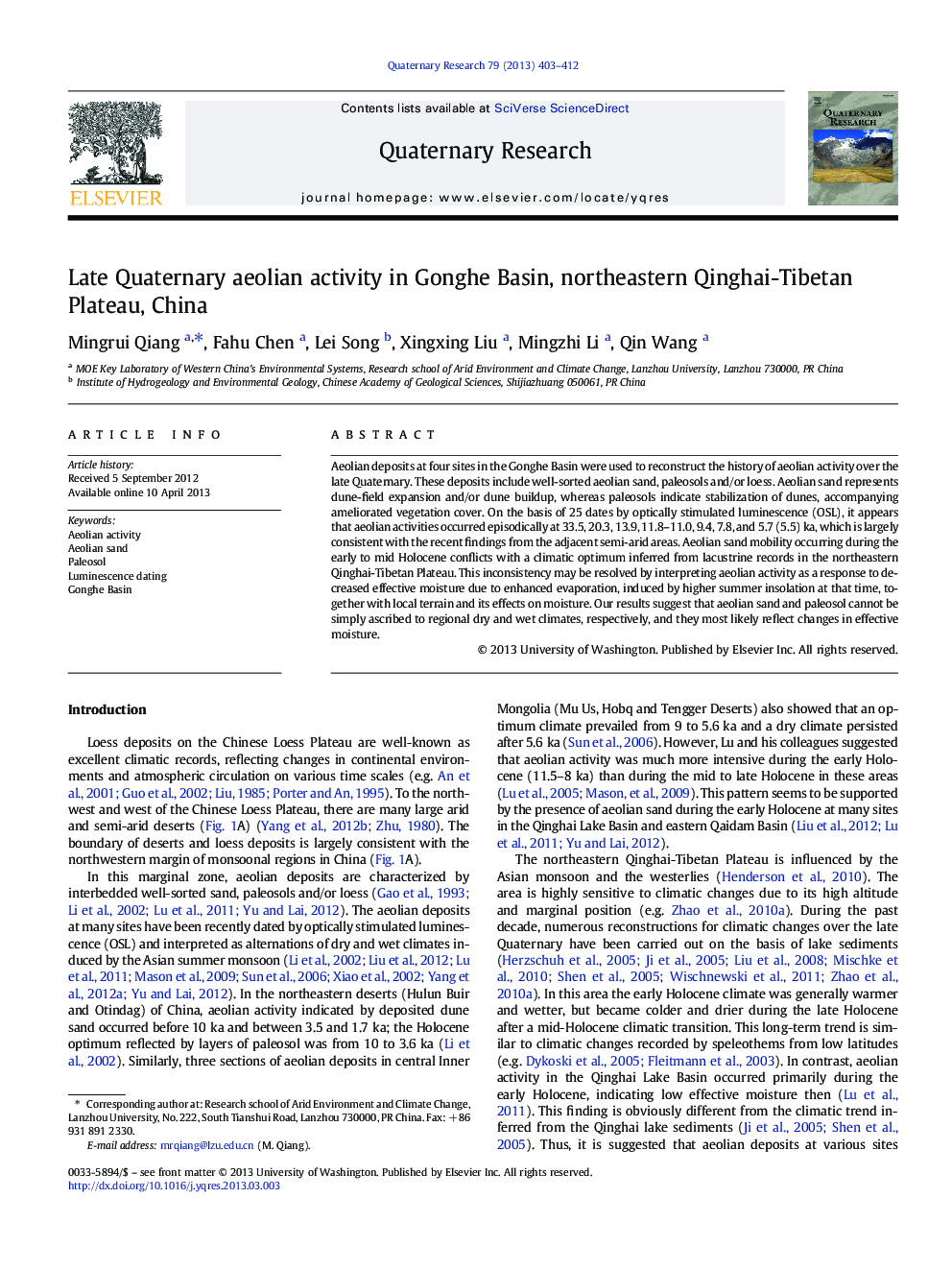| Article ID | Journal | Published Year | Pages | File Type |
|---|---|---|---|---|
| 1045387 | Quaternary Research | 2013 | 10 Pages |
Aeolian deposits at four sites in the Gonghe Basin were used to reconstruct the history of aeolian activity over the late Quaternary. These deposits include well-sorted aeolian sand, paleosols and/or loess. Aeolian sand represents dune-field expansion and/or dune buildup, whereas paleosols indicate stabilization of dunes, accompanying ameliorated vegetation cover. On the basis of 25 dates by optically stimulated luminescence (OSL), it appears that aeolian activities occurred episodically at 33.5, 20.3, 13.9, 11.8–11.0, 9.4, 7.8, and 5.7 (5.5) ka, which is largely consistent with the recent findings from the adjacent semi-arid areas. Aeolian sand mobility occurring during the early to mid Holocene conflicts with a climatic optimum inferred from lacustrine records in the northeastern Qinghai-Tibetan Plateau. This inconsistency may be resolved by interpreting aeolian activity as a response to decreased effective moisture due to enhanced evaporation, induced by higher summer insolation at that time, together with local terrain and its effects on moisture. Our results suggest that aeolian sand and paleosol cannot be simply ascribed to regional dry and wet climates, respectively, and they most likely reflect changes in effective moisture.
